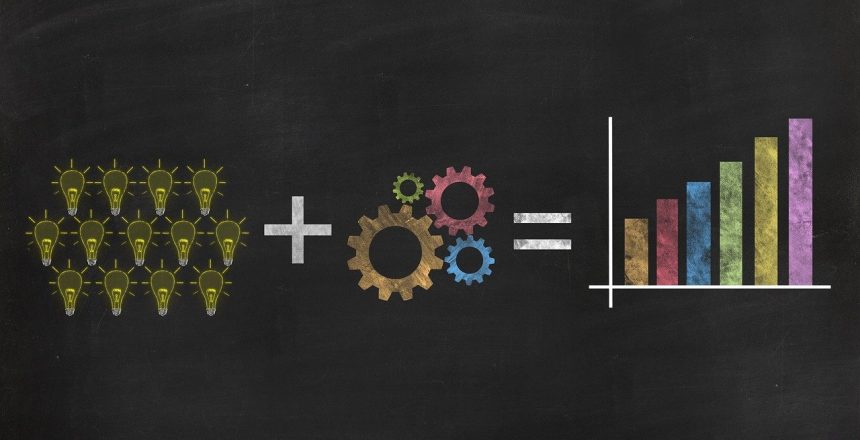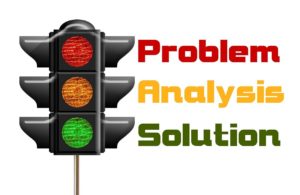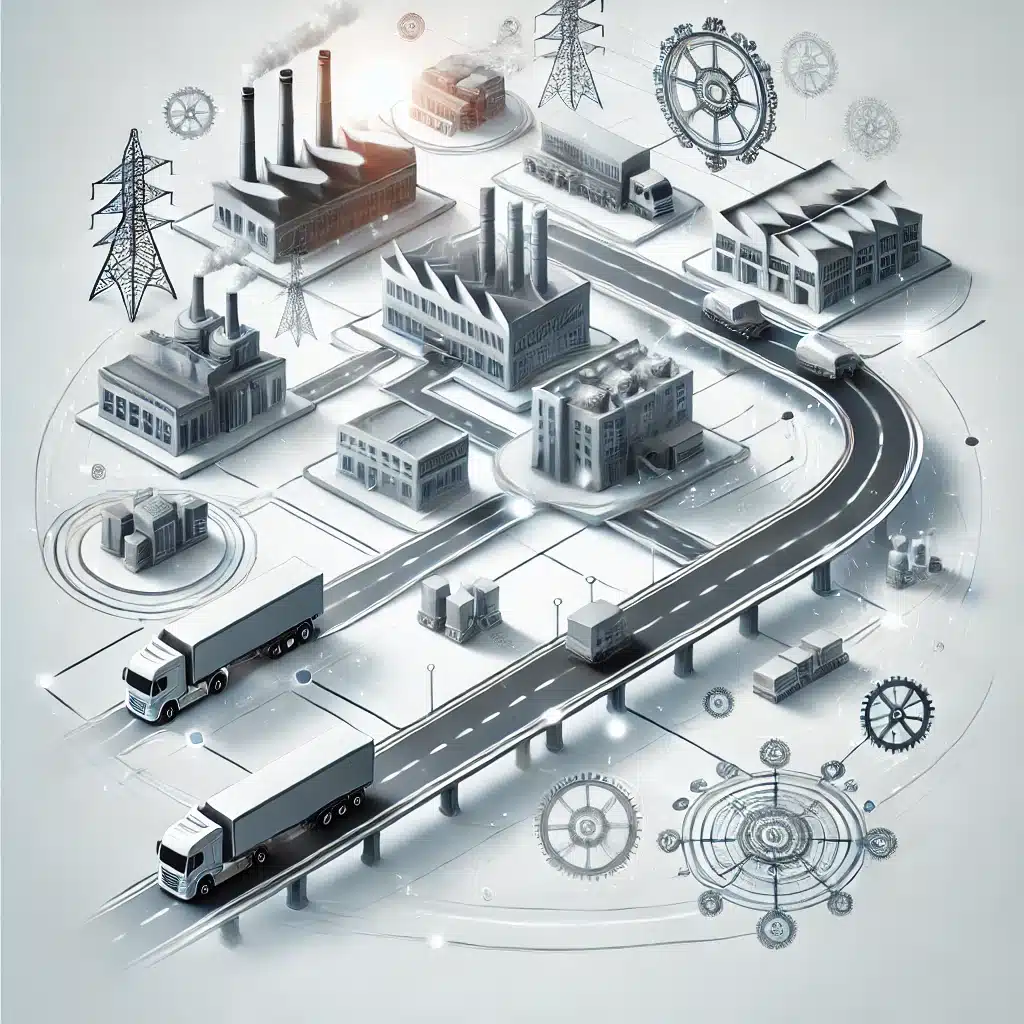Technological performance is based on two concepts for which there are several definitions.
As (Surry & Stanfield, 2008) explain in their chapter titled “Performance Technology”, if one asks the question “What is performance” or even “What is technology” to 10 people, we are likely to receive 10 different answers.
In order to clarify what technology performance is, let’s define performance as well as technology separately.
What is Performance?
In their book, (Surry & Stanfield, 2008) use several authors’ definitions to define performance comprehensively and concisely. To do this, they conducted a literature review.
From the definitions they came up with, they defined performance “as the tangible, measurable and desired results resulting from the efforts of people within an organization. »
What is Technology?
Similarly, the authors defined technology as a tool, technique, or practice that achieves a goal. If one relies on a dictionary to define technology, the definition will be more or less the same.
For example, the Larousse dictionary defines technology as “a set of tools and materials used in crafts and industry. »
Another definition from this same dictionary is a “coherent set of knowledge and practices in a certain technical field, based on scientific principles. (Larousse, 2022)
What is Technological Performance?
Now that performance and technology have been defined, we can group them together to explain what technological performance is.
Technology performance, or technological performance, is a “field of practice that uses various tools, processes, and ideas in a scientific and systematic way to improve desired outcomes for individuals and organizations. » (Surry & Stanfield, 2008)
History of Technological Performance
According to (Stolovitch, 2007), the notion of performance in technology was first mentioned in the 1960s by Thomas F. Gilbert. The latter developed this notion during his research on “the performance of work environments”. (Surry & Stanfield, 2008)
Subsequently, the concept of technological performance developed exponentially.
Among other things, information technologies in the 1980s and 1990s developed a “global knowledge-based economy. (Surry & Stanfield, 2008)
As a result, the competitiveness and democratization of information through the Internet have made it possible to explode the growth of technologies and by the same token the concept of performance in technology.
Today, it is artificial intelligence (AI) that will be in order. According to billionaire Mark Cuban, artificial intelligence could impact at least 10x greater than the internet on business growth.
With this in mind, it is, therefore, logical to believe that AI will be an integral part of technological performance.
Process of Technological performance
Once again, (Surry & Stanfield, 2008) reviewed the literature in order to bring out a process that is unanimous among the scientific community. In fact, they observed the elements that came up with the majority of review authors.
In their words, (Surry & Stanfield, 2008) mention that “despite the fact that technological process models differ in specific details and terminologies”, there seem to be 4 steps that always come up.
The next sections of the text deal with these 4 steps. In order, we find “performance analysis, performance drivers, interventions and evaluation”. (Surry & Stanfield, 2008) To this list, it is relevant to add the results control stage. This step is also discussed in the article.
We have to conclude that these steps are very similar to the “DMAIC” problem-solving methodology. Either Define the problem, Measure it, Analyze it, or Innovate (solve it) and control it. Whether in technology or not, the problem-solving methods are similar. We could also think of the Deming wheel (“Planner, DO, Check, Act”, or Plan, Develop, Adjust, Control in French).
Analysis of Technological Performance
Performance analysis is the first step in the technological process. This step maps the current state of the process under study.
In other words, we measure the performance of a process before making any changes to it. This will allow the improvements made to be assessed.
Measurement of technological performance
The stage of measuring technological performance is crucial because it makes it possible to compare the initial state of a process versus the final or modified state. Without this step, it is not possible to accurately assess the impact of our changes.
At this stage, an interesting tool to measure the impact of a process that contains technologies is value stream mapping. This tool makes it possible to measure and illustrate the performance of a process. This same tool will be used to measure the end state of the process.
To feed the cartography, several analyzes can be carried out. For example, time studies, surveys, observations, etc. Quantitative or qualitative data can be aggregated as needed.
Define the objectives to be achieved
At this stage, we define the objectives that we wish to achieve following our project. Here, we strongly suggest going with so-called “SMART” objectives. That is to say, objectives that are Specific, Measurable, Achievable, Achievable, and Time-bound.
In summary, the SMART objective is precise and not general (Specific). It is measurable because we have to check whether we are achieving our objectives or not. In addition, we must be able to measure our objectives in a partial, repeatable, and reproducible way.
To continue, one must be able to achieve the objectives. What’s the point of setting goals if you can never achieve them? Goals should be realistic. For example, if we can achieve our goals, but we have to spend money that we do not have, then it is not realistic.
Finally, the objective must be temporal. We must therefore establish a schedule and try to evaluate our project as best as possible. In the event of overruns, it is relevant to note the causes of the delays and learn from the mistakes made.
Performance engine
During this stage, we analyze the facilitating and constraining factors of the project. For example, when carrying out projects of a technological nature, the qualification of the workforce or the maintenance of equipment, tools, or systems can be binding elements for the project.
In their chapter on technological performance, (Surry & Stanfield, 2008) targeted 4 categories of factors facilitating or hindering the performance of a system or an operation. The categories are “skills and knowledge, motivation, environment, and incentives. »
Skills and Knowledge
This category includes the various elements related to staff training (operator, maintenance, programming, etc.) and the company’s current knowledge.
For example, if a new technology is implemented requiring programming with an X language and the company already has staff who can perform this task. So that becomes a facilitating factor.
On the contrary, if we do not have this knowledge within the organization, it becomes a constraint and actions must be taken to overcome it.
Between 2 choices of technologies, it is obvious that the one with the most facilitating factors must be prioritized. According to Toyota, one of the best companies in terms of performance only implements proven technologies. In this way, they reduce and control the risk factors.
Finally, here is a list of elements that can be considered as facilitating factors or as risk factors of a technological project. These will help you analyze these “performance drivers” and it’s not exhaustive.
- Training (difficulty, proximity, cost, etc.)
- Maintenance (cost, parts availability, training, reliability, etc.)
- After-sales service (proximity, evaluation, warranty, etc.)
- Space required (magnification required, special features, etc.)
- Potential danger (risk analysis…)
- Proven technology? (recent technology or already tested elsewhere?)
Motivation
The second source of performance drivers is motivation. For example, if you automate an operation and it becomes “numbing” and without challenge for the operator, it can become a performance risk factor.
Conversely, if the operation is transformed into something more stimulating for the employees, it becomes a facilitating factor. The implementation of the technology will be much easier and more fluid since the employees will be inclined to participate in the project.
According to (Surry & Stanfield, 2008), there are different theories on the factors affecting motivation. However, two things stand out. “Value” and “Trust”.
To be motivated, an employee must feel that what he is doing has value and he must be sure that he can carry out the tasks required of him. In addition, when an employee feels that a company (management) trusts him to accomplish a task, it becomes a source of motivation.
Finally, for trust and valuation to be optimal, it is important that the objectives are clear and well-defined. Here is one more reason to establish SMART objectives during projects.
Environnement
The environment as defined by the author’s Surry and Stanfield represents “all the tools, facilities, policies, social interactions, cultures, traditions, practices, and other conditions present within an organization at the time a task is to be performed. (Surry & Stanfield, 2008)
Following this definition, there are several elements related to the environment that can facilitate or hinder a task. Here are some examples :
- Workspace (restrained, flat, etc.)
- Work tools (modern, outdated, easily accessible, etc.)
- Coworker (experienced, sociable, competent, etc.)
- Process variability (in control, variable, etc.)
Incentives
The final performance driver category is incentives. They correspond to the “external benefits” that an employee receives after having “completed a task”.
Incentives can be both positive and negative for a business and vary by “type of business, country, and culture. »
Finally, in order to make incentives as effective as possible, they must be tied to performance goals that are specific, time-bound, and available to all employees. In addition, incentives must be fair and equitable. (Surry & Stanfield, 2008)
Interventions
The third step in the technology performance process is interventions. They are consistent in all actions aimed at increasing the company’s performance. In a technological context, these actions will obviously be linked to this field.
To carry out this step, the standard tools of continuous improvement are applicable. For example, “Kaizen” activities, “brainstorming” sessions, simulations, etc.
During this stage, we build an action plan with different objectives and responsibilities to complete the projects. The introduction of new technologies, training, pilot projects, etc. are examples of what can be achieved.
In order to separate the different problems to be solved into categories, the Ishikawa (or fishbone) diagram can be an effective tool.
For project management and actions to be carried out, the A3 methodology is a good tool.
You can also use Gantt charts or other tools to track the progress of projects.
Evaluation
The last stage mentioned by (Surry & Stanfield, 2008) is the evaluation stage. This consists of verifying the impact of the changes made. That is, measure the process or operation again and compare it with the results obtained in the first step (the current performance measurement).
Again, tools like value stream mapping, time studies, observations, surveys, etc. illustrate and measure the results obtained.
One of the most important indicators when talking about a technological project is the ROI (return on investment). It consists of calculating the time required for an investment to pay off. Simply said, we divide the total cost of the project by the profit generated.
For example, if implementing technology in a system costs $100,000 and brings in $10,000 per month, then the ROI is 10 months ($100,000 / $10,000/month = 10 months) .
In industry, depending on the cost of acquisition, a rule of thumb is that a project with an ROI of less than one year is a very good project. However, this may depend on the companies and other factors. It is therefore good to inquire with the management of the company to know their “scale” and their objectives.
In some cases, surveys can be conducted to measure employee or customer satisfaction before and after a change. It all depends on the goal.
Control
This last step consists in controlling the results obtained following a project in order to maintain them over time. In addition, this is a good time to review the project carried out in order to draw lessons learned.
In this way, we want to replicate successful projects on a large scale, repeat our good costs and learn from our mistakes.
Also, we want to make sure that the changes we have just implemented will last. Too often we neglect this step and we find ourselves reimplementing what we had already done in the past.
Resistance to change is one of the most difficult elements to overcome during a project. With technology, it’s no different. We must overcome the fears of employees and ensure that the new working methods and new tools are well anchored in the ways of doing business.
In the event that certain tools or methods are no longer used, we must quickly analyze the situation and eliminate the irritants in order to sustain our changes and maximize their potential.
Conclusion
In this text, the definition and the process of technological performance have been developed. In addition, several tools were presented with the aim of offering a concrete methodology for successful projects and achieving technological performance.
Finally, whether it is a technological project or not, we see that the project management methodologies are similar. In terms of technological performance, we can therefore choose the method that suits us (DMAIC, A3 methodology, Deming wheel, methods proposed in this article, and others).
Even today, technologies are evolving at a breakneck pace and are essential to the competitiveness of businesses. Currently, technologies related to artificial intelligence are increasingly put forward. To implement it successfully, you have to be structured. Will you be part of the wave or will you stay behind when it comes to technological performance?
Reference :
Dictionnaire Larousse, 2022. https://www.larousse.fr/dictionnaires/francais/technologie/76961 Consulté le 25 Juillet 2022.
Stolovitch, H. D. (2007). The development and evolution of human performance improvement. In R. A. Reiser & J. V. Dempsey (Eds.), Trends and issues in instructional design and technology (2nd ed., pp. 134–146). Upper Saddle River, NJ: Pearson, Merrill, Prentice Hall.
Surry, D. W., & Stanfield, A. K. (2008). Performance technology. In M. K. Barbour & M. Orey (Eds.), The Foundations of Instructional Technology. https://lidtfoundations.pressbooks.com/chapter/performance-technology/#:~:text=Performance%20technology%2C%20therefore%2C%20is%20a,outcomes%20of%20individuals%20and%20organizations.
Mark Cuban, https://www.youtube.com/watch?v=-oa6X3Cn-Q8









